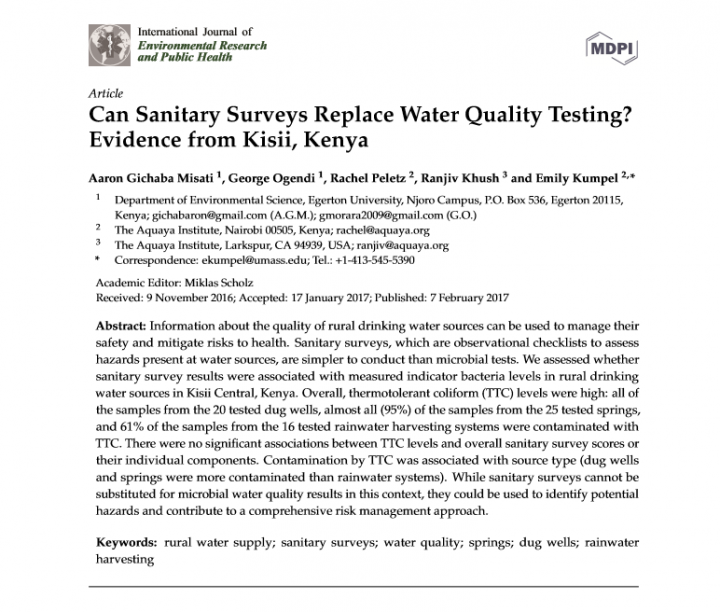Can Sanitary Surveys Replace Water Quality Testing? Evidence from Kisii, Kenya. Misati, A. G., Ogendi, G., Peletz, R., Khush, R., Kumpel, E. (2017)
Information about the quality of rural drinking water sources can be used to manage their
safety and mitigate risks to health. Sanitary surveys, which are observational checklists to assess
hazards present at water sources, are simpler to conduct than microbial tests. We assessed whether
sanitary survey results were associated with measured indicator bacteria levels in rural drinking
water sources in Kisii Central, Kenya. Overall, thermotolerant coliform (TTC) levels were high: all of
the samples from the 20 tested dug wells, almost all (95%) of the samples from the 25 tested springs,
and 61% of the samples from the 16 tested rainwater harvesting systems were contaminated with
TTC. There were no significant associations between TTC levels and overall sanitary survey scores or
their individual components. Contamination by TTC was associated with source type (dug wells
and springs were more contaminated than rainwater systems). While sanitary surveys cannot be
substituted for microbial water quality results in this context, they could be used to identify potential
hazards and contribute to a comprehensive risk management approach.
Bibliographic information
Misati, A. G., Ogendi, G., Peletz, R., Khush, R., Kumpel, E. (2017). Can Sanitary Surveys Replace Water Quality Testing? Evidence from Kisii, Kenya. International Journal of Environmental Research and Public Health
Filter / Tags
RuralEnglish
Downloads

Published in: 2017
Pages: 12
Publisher:
International Journal of Environmental Research and Public Health
Author(s):
Misati, A. G., Ogendi, G., Peletz, R., Khush, R., Kumpel, E.
Uploaded by:
Aquaya
Aquaya Institute
Location of library entry:
